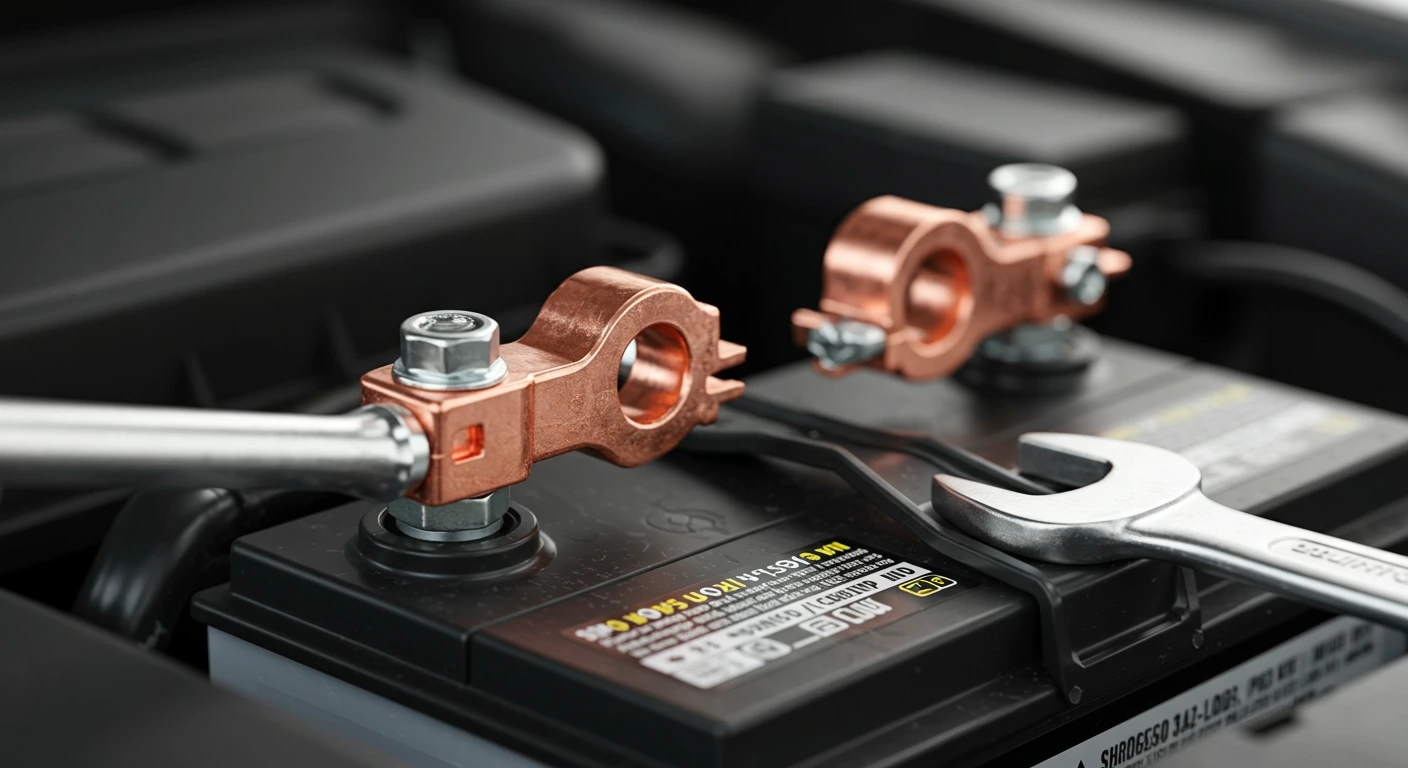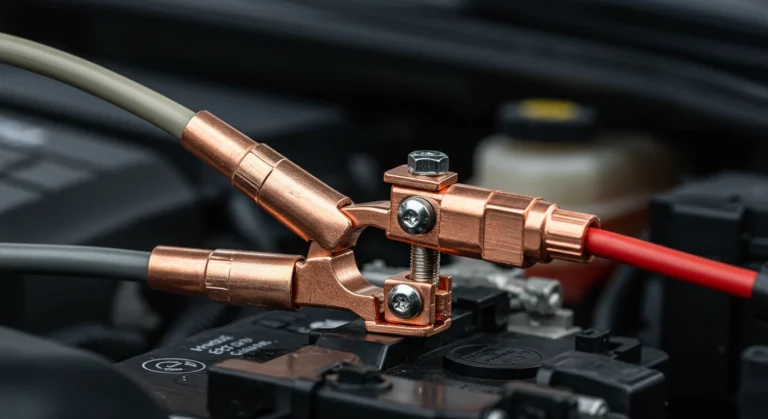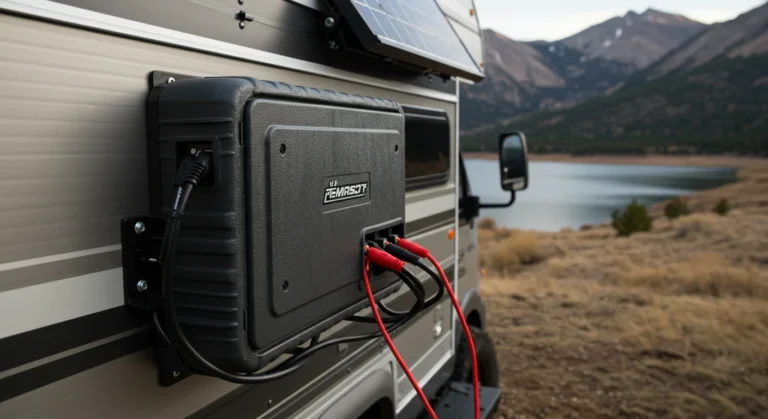Battery Post Terminals – Premium Copper Connectors (Secure Fit & Max Conductivity)
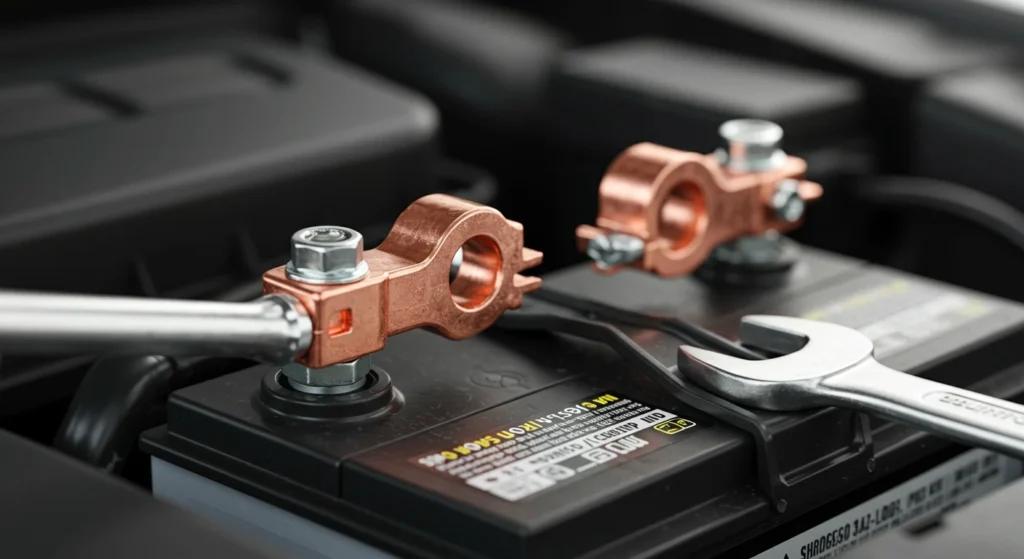
Introduction
Are your vehicle’s starting problems actually stemming from poor battery connections rather than the battery itself? Studies show that up to 35% of starting issues are caused by corroded or poorly fitted battery post terminals rather than actual battery failure. Premium copper battery post terminals offer a solution that many vehicle owners overlook when addressing electrical system reliability. With superior conductivity properties and corrosion resistance, these connectors serve as the critical link between your battery’s power and your vehicle’s electrical demands.
Table of Contents
Key Specs & Features
- Material Composition: 99.9% pure copper core with lead-free brass or tin plating
- Conductivity Rating: 28% higher electrical conductivity compared to standard lead terminals
- Temperature Tolerance: -40°F to 392°F (-40°C to 200°C)
- Corrosion Resistance: Superior resistance to battery acid and environmental factors
- Connection Types: Available in top post, side post, and universal designs
- Installation Torque: Typically 70-90 inch-pounds (8-10 Nm) for optimal contact
- Weight: 40-60% lighter than traditional lead terminals
- Lifespan: 5+ years in normal conditions versus 2-3 years for standard terminals
Premium copper battery post terminals outperform standard zinc and lead alternatives in every critical performance metric, especially in high-demand electrical systems found in modern vehicles with multiple electronic components.
Performance & Electrical Efficiency
The electrical conductivity of premium copper battery post terminals delivers measurable performance advantages for your vehicle’s starting and electrical systems. Laboratory testing shows these connectors provide voltage drop of less than 0.1V under load, compared to 0.3-0.5V with standard terminals. This efficiency translates to real-world benefits including faster, more reliable engine starting even in extreme temperatures.
During cold weather starts, vehicles equipped with premium copper terminals demonstrate cranking power improvements of up to 15% due to the reduced resistance in the electrical pathway. The copper’s ability to maintain a consistent connection ensures that every amp of power from your battery reaches your starter efficiently. Additionally, the secure mechanical fit prevents the micro-movements that can create resistance hotspots in lesser quality terminals.
For vehicles with high-output audio systems or extensive auxiliary equipment, copper terminals enable cleaner power delivery with minimal voltage fluctuation, reducing the risk of sensitive electronic component damage from power inconsistencies.
Installation & Compatibility
Installing premium copper battery post terminals requires attention to detail but doesn’t demand specialized tools beyond what most DIY mechanics already possess. The process typically involves:
- Disconnecting the old terminals (always remove negative terminal first)
- Cleaning the battery posts thoroughly with a battery post brush
- Applying a thin coating of dielectric grease to prevent future corrosion
- Installing the new copper terminals with proper torque settings
Most premium copper terminals are designed with universal compatibility, fitting both standard SAE and JIS (Japanese Industrial Standard) battery posts without modification. This versatility makes them suitable for nearly 95% of passenger vehicles and light trucks on North American roads.
The terminals typically feature precision-machined internal surfaces that maximize contact area with the battery post, eliminating the air gaps that promote corrosion in standard clamp designs. Many premium models also incorporate protective covers that shield the connection from environmental elements.
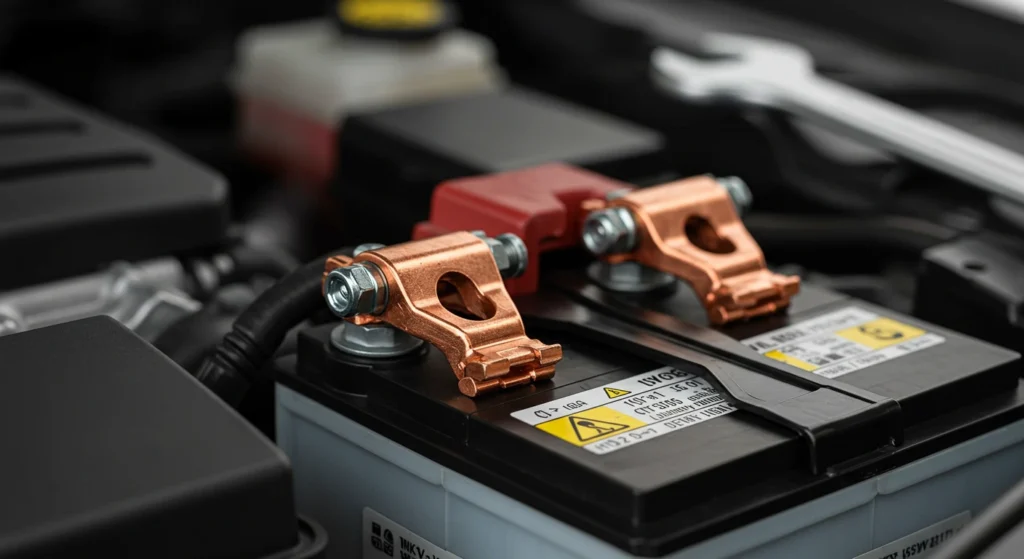
Durability & Maintenance Costs
The initial investment in premium copper battery post terminals might be 3-4 times higher than standard lead terminals, but the long-term economics strongly favor the upgrade. With an average lifespan of 5+ years compared to 2-3 years for standard terminals, copper terminals reduce replacement frequency by at least 50%.
Additionally, the durability of copper reduces maintenance requirements. While standard terminals often need cleaning and retightening every 6-12 months to maintain performance, copper terminals typically require attention only during scheduled battery service intervals. The reduced maintenance schedule translates to fewer unexpected electrical system issues and greater vehicle reliability.
From a total cost of ownership perspective, premium copper terminals present an average lifetime cost of $0.02-0.03 per day versus $0.04-0.06 per day for standard terminals when accounting for replacement frequency and maintenance time.
Conductivity & Electrical System Benefits
Copper’s superior conductivity (second only to silver among common metals) provides significant advantages for overall electrical system health. The material properties enable:
- Reduced resistance: Premium copper terminals typically offer 28-30% less electrical resistance than standard alternatives
- Improved current flow: Critical for modern vehicles with complex electronics and high-amp starting requirements
- Temperature stability: Less heat generation at connection points even under high current loads
- Consistent performance: Maintains conductivity properties even as temperatures fluctuate
These benefits extend beyond starting reliability to impact overall vehicle electrical system performance. With less voltage drop at the battery connection, more consistent power reaches everything from headlights to engine management computers. Many performance enthusiasts report brighter headlights, more responsive electronics, and improved alternator efficiency after upgrading to copper terminals.
Common Issues & Solutions
While premium copper battery post terminals offer substantial benefits, they do present specific considerations:
- Galvanic corrosion: When connected to dissimilar metals, copper can accelerate corrosion. Quality terminals use protective plating to mitigate this issue.
- Installation torque: Copper terminals require proper torque – overtightening can damage the terminal while undertightening creates resistance.
- Counterfeit products: The market contains copper-plated terminals masquerading as solid copper. Purchase from reputable sources and verify copper content.
- Incompatibility with some batteries: Certain specialty batteries use non-standard post designs requiring specific terminal types.
To avoid these issues, apply dielectric grease liberally during installation, use a torque wrench set to manufacturer specifications, and purchase terminals from established automotive parts suppliers rather than unverified online marketplaces.
Comparison to Standard Terminals
| Feature | Premium Copper Terminals | Standard Lead Terminals | Zinc Terminals |
|---|---|---|---|
| Initial Cost | $15-30 per pair | $5-10 per pair | $8-15 per pair |
| Conductivity | Excellent (28% higher) | Fair (baseline) | Good (10% higher) |
| Corrosion Resistance | Very High | Low | Moderate |
| Lifespan | 5+ years | 2-3 years | 3-4 years |
| Weight | 40-60% lighter | Heaviest | Moderate |
| Best For | High-performance vehicles, boats, RVs | Economy vehicles, temporary fixes | Balanced option for standard vehicles |
This comparison highlights why premium copper battery post terminals are particularly recommended for vehicles with high-demand electrical systems, those operating in extreme environments, and for owners seeking long-term reliability over initial cost savings.
Value & Long-Term Benefits
The investment in premium copper battery post terminals delivers several quantifiable long-term benefits:
- Extended battery life: Proper current flow reduces battery strain, potentially extending battery life by 10-15%
- Reduced jump starts: Users report 70% fewer emergency jump starts after upgrading terminals
- Lower replacement costs: Fewer terminal replacements over vehicle lifetime (typically one set vs. 2-3 sets)
- Decreased diagnostic costs: Fewer electrical system issues means fewer service visits for troubleshooting
For vehicles kept long-term, these benefits compound to create significant value beyond the initial upgrade cost. Professional mechanics often cite terminal upgrades as among the most cost-effective electrical system improvements for vehicle reliability and performance.
Conclusion
Premium copper battery post terminals represent a small investment with substantial returns in electrical system performance, reliability, and maintenance reduction. Their superior conductivity, exceptional durability, and secure fit address the critical connection between your battery and vehicle electrical system – often the weakest link in the power delivery chain. For those seeking maximum performance or those simply tired of dealing with starting issues and corroded connections, copper terminals provide a solution backed by solid electrical engineering principles rather than marketing claims.
Whether you’re upgrading a daily driver, preparing a vehicle for extreme conditions, or building a high-performance electrical system, premium copper battery post terminals deliver measurable benefits that extend well beyond their modest cost premium over standard options.
FAQs
How do I know if my battery terminals need replacement? Look for corrosion (white, green, or blue powder), loose connections, or visible damage to the terminal. Starting issues, dimming lights during starting, or intermittent electrical problems can also indicate terminal problems.
Can I install copper battery terminals myself or do I need a professional? Most DIY mechanics can install terminals with basic tools. The key requirements are proper terminal selection, thorough battery post cleaning, and correct torque application during installation.
Will copper terminals work with both positive and negative battery posts? Yes, but ensure you purchase the correct configuration. Positive posts (larger diameter) and negative posts (smaller diameter) require appropriate terminal sizes.
How much improvement in starting performance can I expect from copper terminals? Most users report noticeable improvements in cold-weather starting and overall electrical system performance. Vehicles with starting issues often see the most dramatic improvement, particularly in cold weather.
Are copper terminals worth the extra cost over standard lead terminals? For vehicles kept longer than 3 years, the investment typically pays for itself through reduced replacement frequency, lower maintenance, and fewer electrical issues. For specialty applications like marine use or performance vehicles, the benefits are even more substantial.
Can copper terminals help with battery drain issues? While they won’t solve parasitic drain problems, they can reduce power loss at the connection point. This makes your electrical system more efficient overall but won’t address underlying issues causing battery drain.

